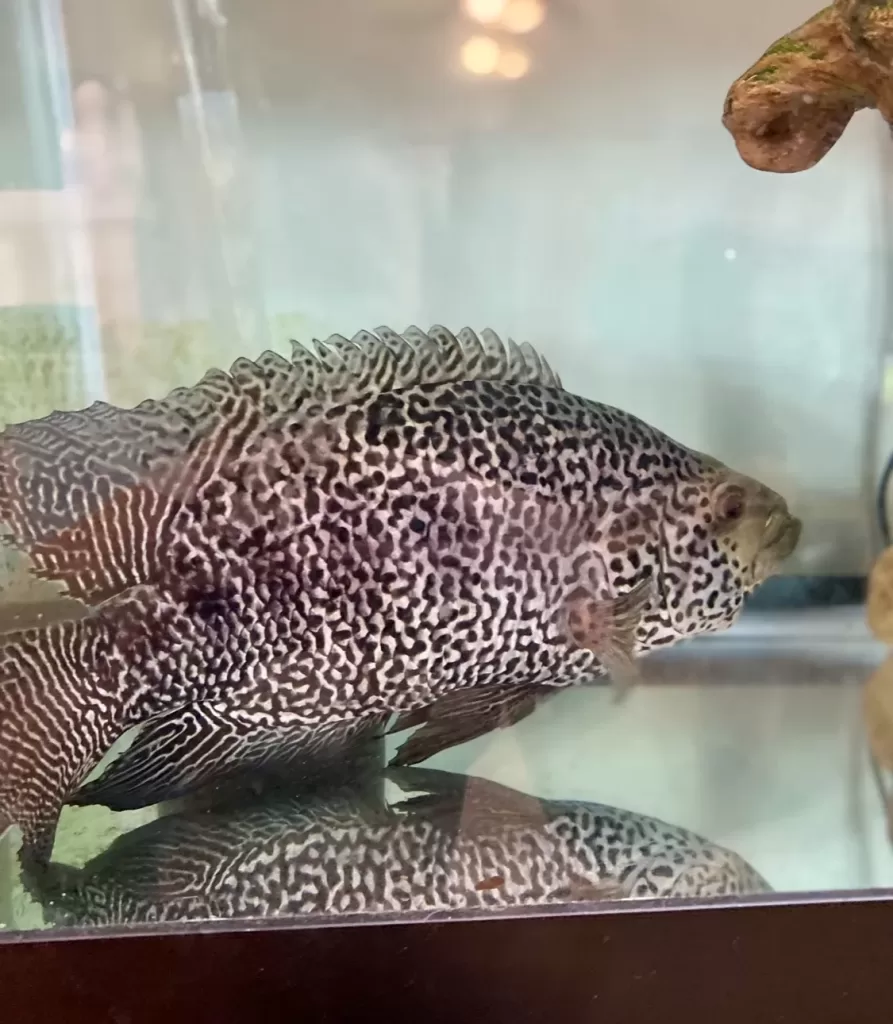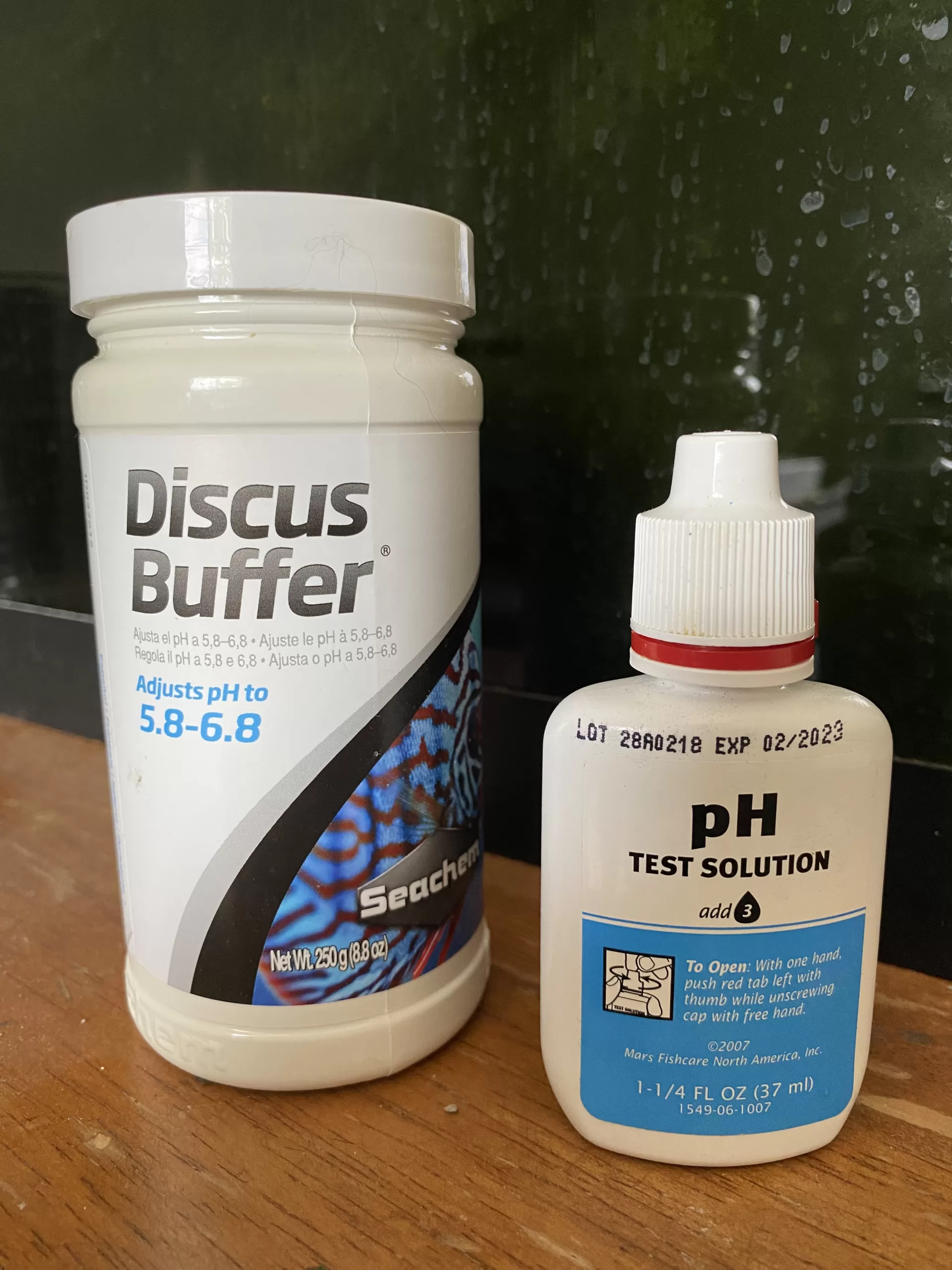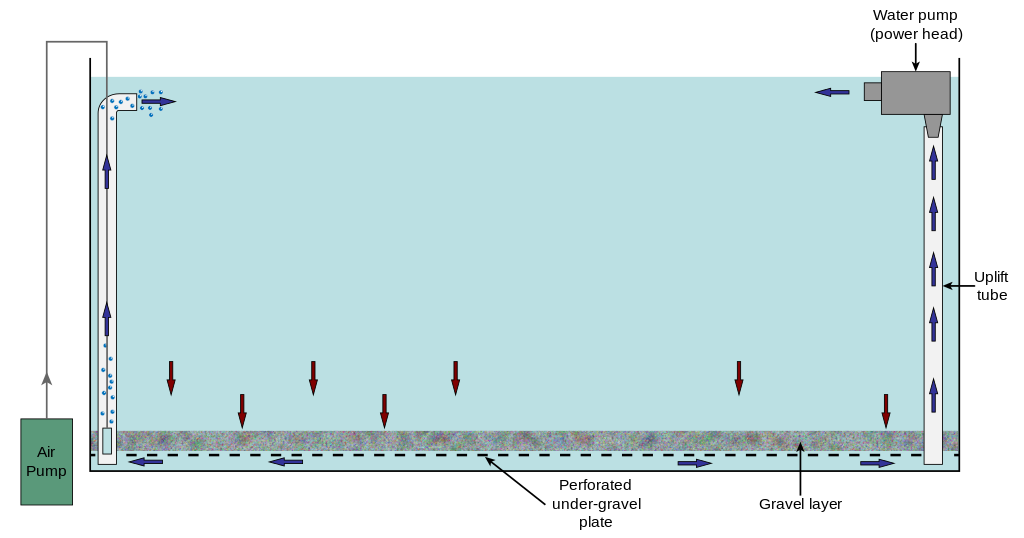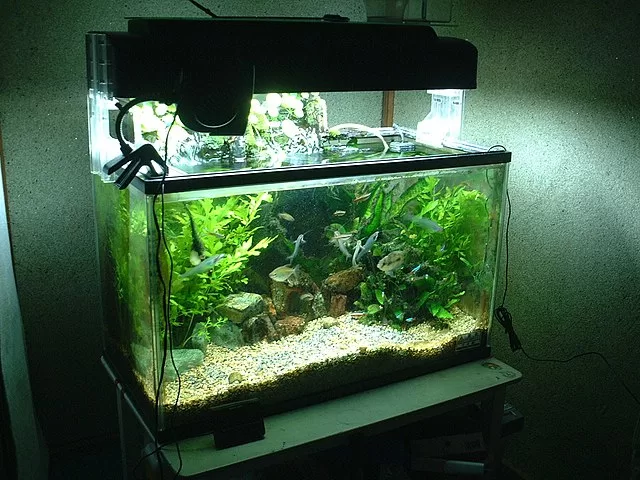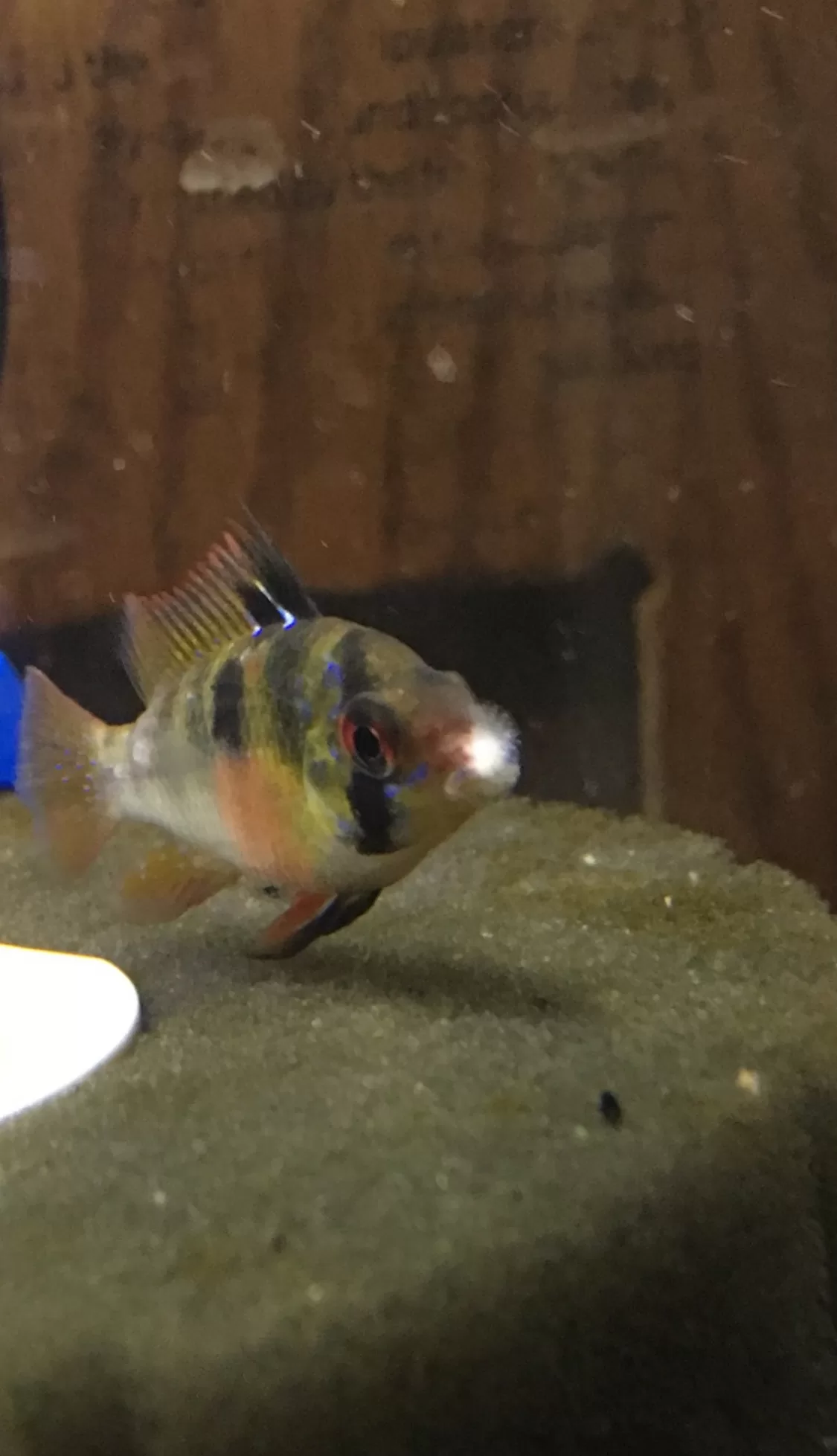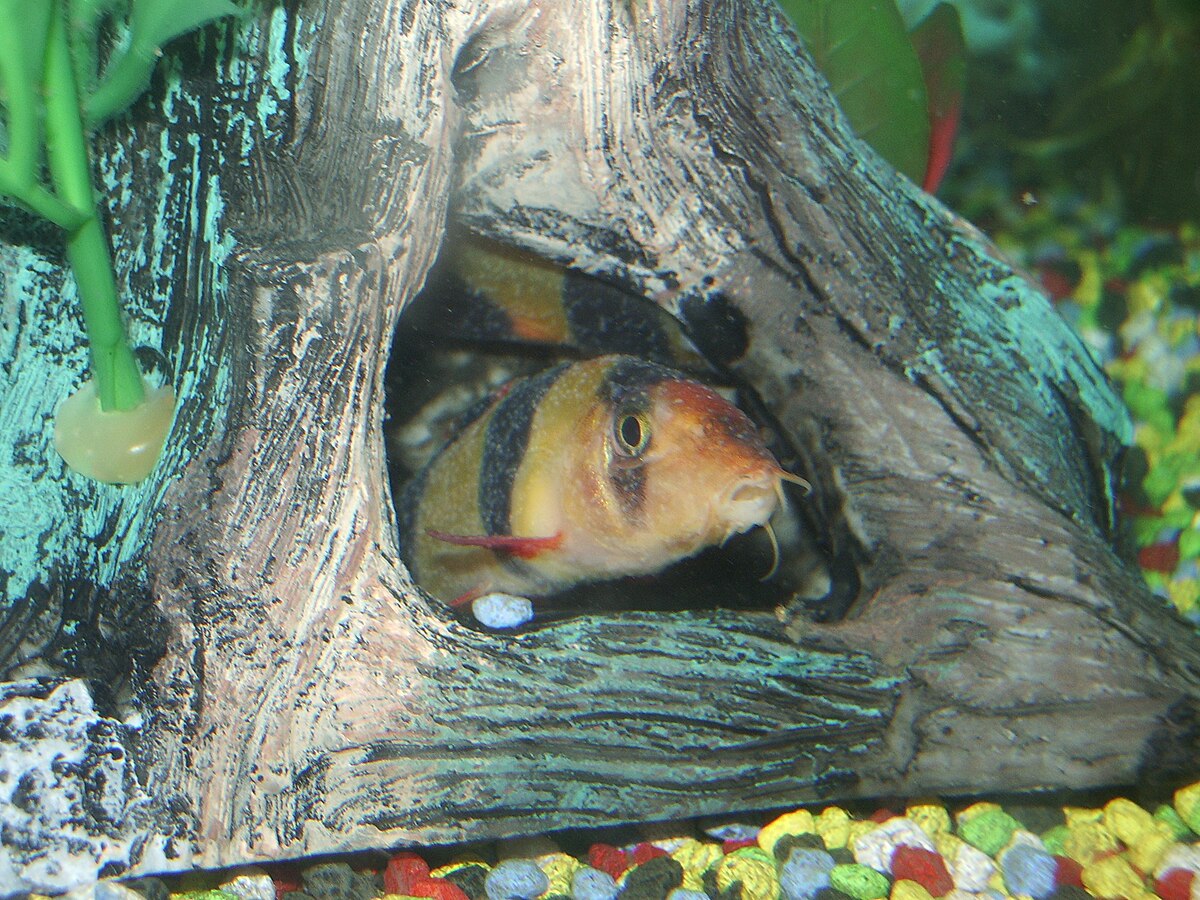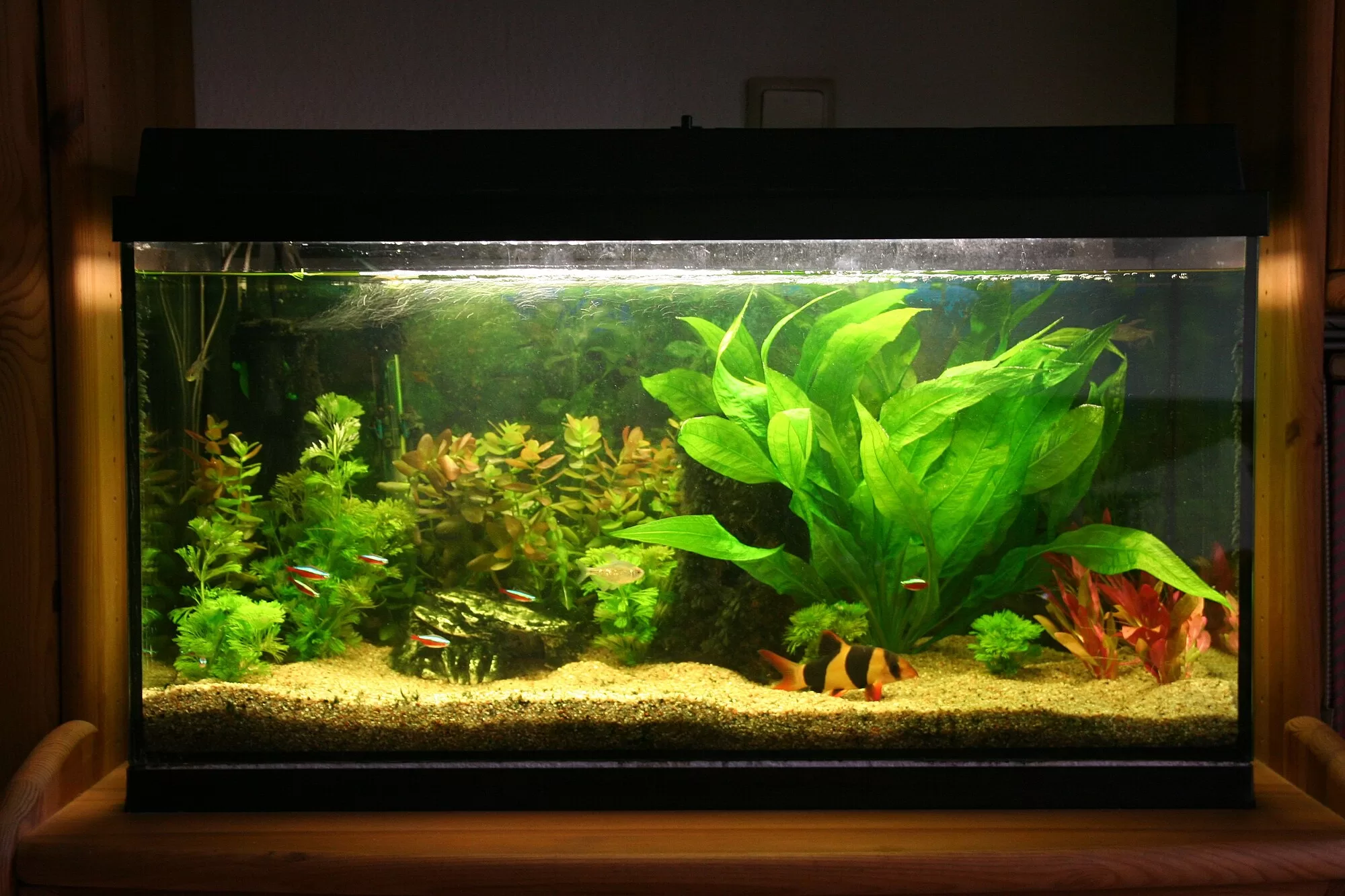Jaguar Cichlids or Managuense Cichlids (Parachromis managuensis) are one of my favorite species of fish. My oldest living fish currently is a 7-year-old male Jaguar, named Peep. That is a picture of him above. I bought him when he was just an inch long back when I worked at a fish store. It probably wasn’t the best decision for me, as I didn’t think about the long-term of owning an aggressive fish of this caliber. He is in a 125-gallon by himself because he will kill anything that goes in there. At 18 inches long, he is a highly aggressive and intelligent fish.
After keeping this species for years, I’m writing this guide to pass on the information to others so they can care for their Jaguar Cichlids.
Understanding Jaguar Cichlids
Jags are native to Central America, specifically Honduras, Nicaragua, Costa Rica, and Panama. Their scientific name comes from the fact that they were most abundant in Lake Managua, which is located in Nicaragua.
These fish are one of the largest (in terms of potential growth) available in an average fish store. Most monster fish are usually specially ordered, like Arowana, but you can find Jaguar Cichlids even in stores like Petsmart.
Male Jaguars frequently reach 18 inches plus, while females stay several inches shorter. Their bodies are black with a slight gold in the pattern. The males are covered in small spots while the females have more defined stripes and not as many spots.
Setting Up the Right Environment
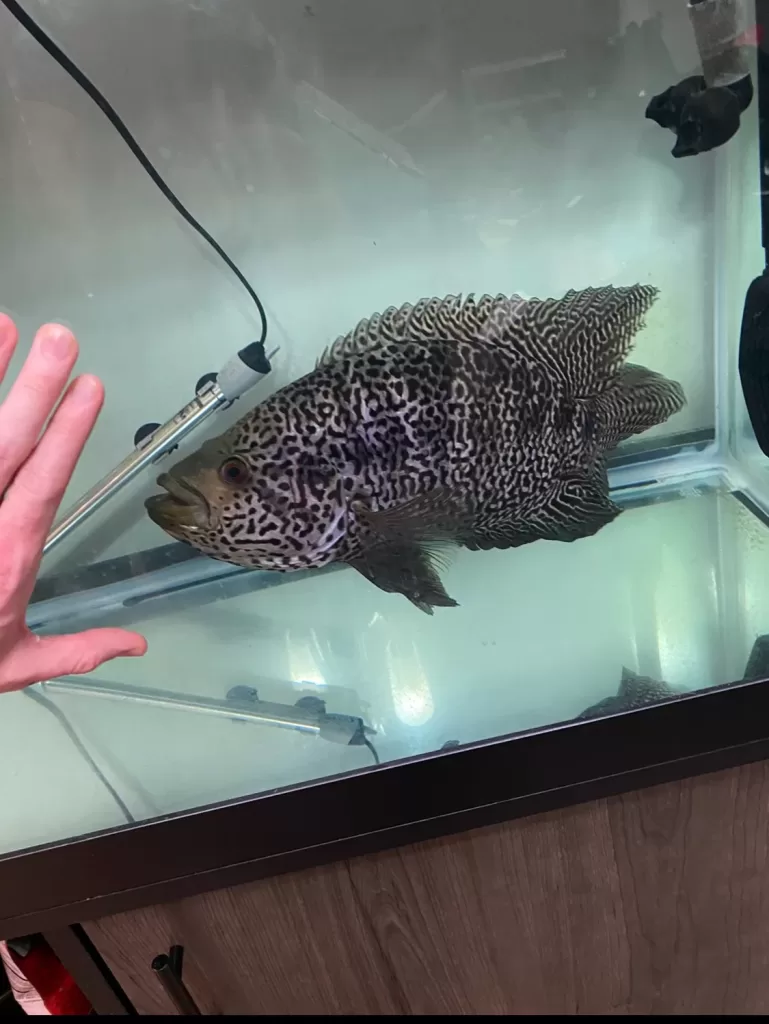
Aquarium Size and Setup:
Because they get so large and they are such aggressive fish (especially the males), you need to have an appropriate-sized aquarium. This is a bit subjective, but I recommend no less than 125 gallons for a single adult male and 75 gallons for a single female.
Now that doesn’t mean you have to start at 125 gallons, but like I did, you upgrade as they grow. You might be able to get away with a male and female pair and a 125, but for a pair, I would recommend 150 gallons at least. If you want to have tank mates with an adult male, the aquarium should be no less than 150 gallons. In contrast, a single adult female should have a 75-gallon minimum. if you want tank mates, you should have a minimum of 90 gallons.
They tend to be redecorators, at least in my experience, and they don’t like much in their aquarium. When I had substrate in my tank my Jag would constantly move and pile it up. When he was younger he tolerated plants, but as an adult he just destroys them.
The main habitats they’re native to have rock bottoms with little vegetation, therefore, a baron tank is usually preferred. A Shale bottom or large substrate will work if you don’t want a bare-bottom aquarium. Large rocks, pots, and wood are good decor.
Water Parameters:
In most, if not all, of Central America’s freshwater systems the water is very alkaline, therefore the pH is high. The optimal pH for Jaguar Cichlids is 7.4 to 8.7, with 8 to 8.4 being the most natural.
In terms of water temperature, Jaguars do best between 74°F and 82°F. I keep mine at about 78°F and a pH around 8.2 to 8.4. My tap water has a pH at the optimal levels. I didn’t change it nor should you unless there are extreme circumstances, like if you have a pH of 6 out of your tap.
Feeding Your Jaguar Cichlid
Jaguar Cichlids are carnivorous predators with a big appetite. In the wild, their diet is made up of smaller fish, crustaceans, and insects. My Jag is fairly picky, He eats carnivore sticks made by Hikari, frozen krill (his favorite), blood worms (although these are super messy), and live insects. When the 17-year cicadas came around, I fed tons of them to Peep. When I find beetles outside the door, I will grab them and throw them in the tank. He loves insects.
To summarize that:
- Live or frozen foods like krill, shrimp, bloodworms, and feeder fish. Be very careful where the feeder fish come from because those can invite disease.
- High-quality cichlid pellets made for big carnivorous fish, like Hikari floating sticks.
Feed once a day or once every other day, and make sure to not overfeed because it can be messy.
Social Behavior and Tank Mates
As I mentioned before, Jaguars are extremely aggressive fish, and choosing the right tank mates with the appropriate sized tank is crucial.
- Other large Central and South American cichlids usually work well. Species like Oscars, Red Devils, and Flowerhorns.
- Large catfish species.
While these are just general guidelines, each fish will have a different personality and temperament. Males can be especially difficult to keep with other fish. My Jag will simply not allow anything else in the tank with him. In fact, he doesn’t even allow my hand or any objects to go into the tank. If I put my hand in the tank he will torpedo himself into me, and it honestly hurts because of the strength that he has combined with his size.
The thing he hates more than everything is the gravel siphon. Even when I just hold the siphon up to the glass, he will flare his gills and try to attack it.
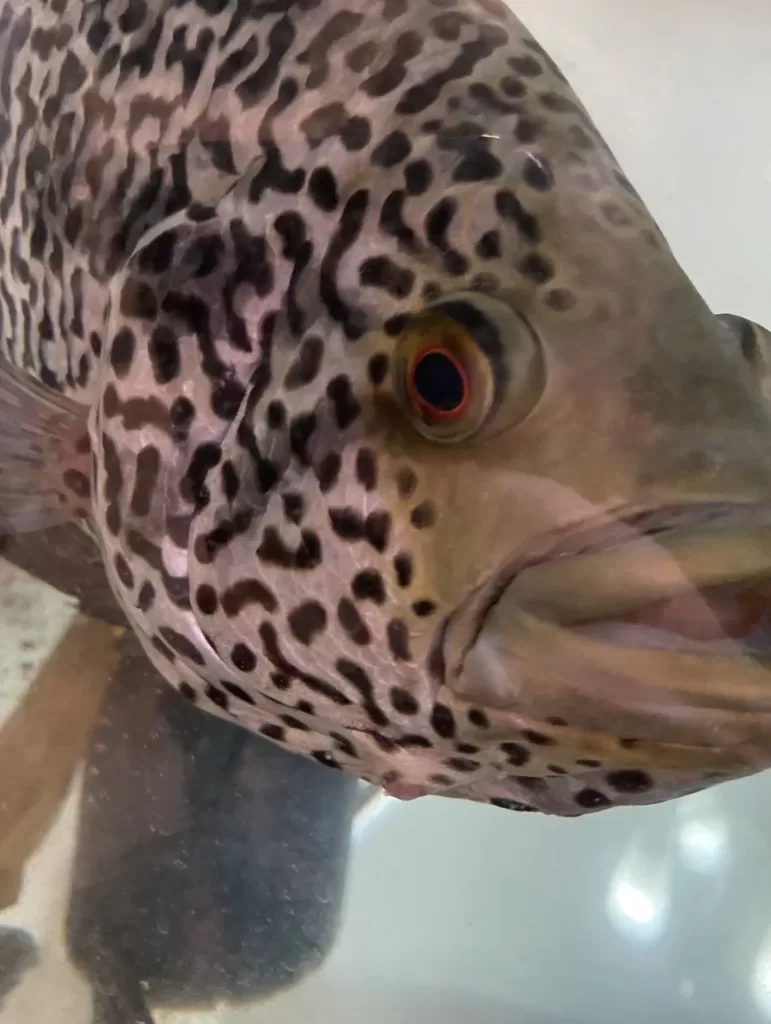
Health and Disease Prevention
Disease is not necessarily common with Jaguar Cichlids. However, there are some potential illnesses you should look out for. Watch for any changes or symptoms like lethargy, appetite, or a change in the skins appearance.
- Ichthyophthirius (Ich): This will look like the fish has been covered in salt. Other symptoms include clamped fins, lethargy, and lack of appetite.
- Fungal Infections: Usually fungal infections in fish are secondary to bacterial infections and look like white fluff on the fish. The bacterial infection creates dead skin which causes Saprolegnia fungus to start feeding off of.
- Bacterial Infections: Signs of bacterial skin infections include things like fin rot, ulcers, red streaks, and overall lethargy.
The basic principles of disease prevention should be followed like with any other fish. That means maintaining good water quality, a balanced diet, and always quarantining new fish before adding them to the tank.
Breeding Jaguar Cichlids
Breeding Jags is not necessarily hard at all, but you need a big tank housing only the breeding pair. They will prolifically breed under the right conditions. If you want to breed them, put a pair in a tank together and provide a lot of flat surfaces for the female to lay the eggs on. They are typically good parents and will raise the fry without you having to do much.
Jaguar Cichlid Care Summary
Keeping Jaguar Cichlids is a lot of fun and very rewarding. They are extremely intelligent fish with a lot of personality. However, these big carnivores require a lot of space and very specific tank mates. They are not difficult to care for, but it’s essential to follow the information listed in this guide for proper care.

